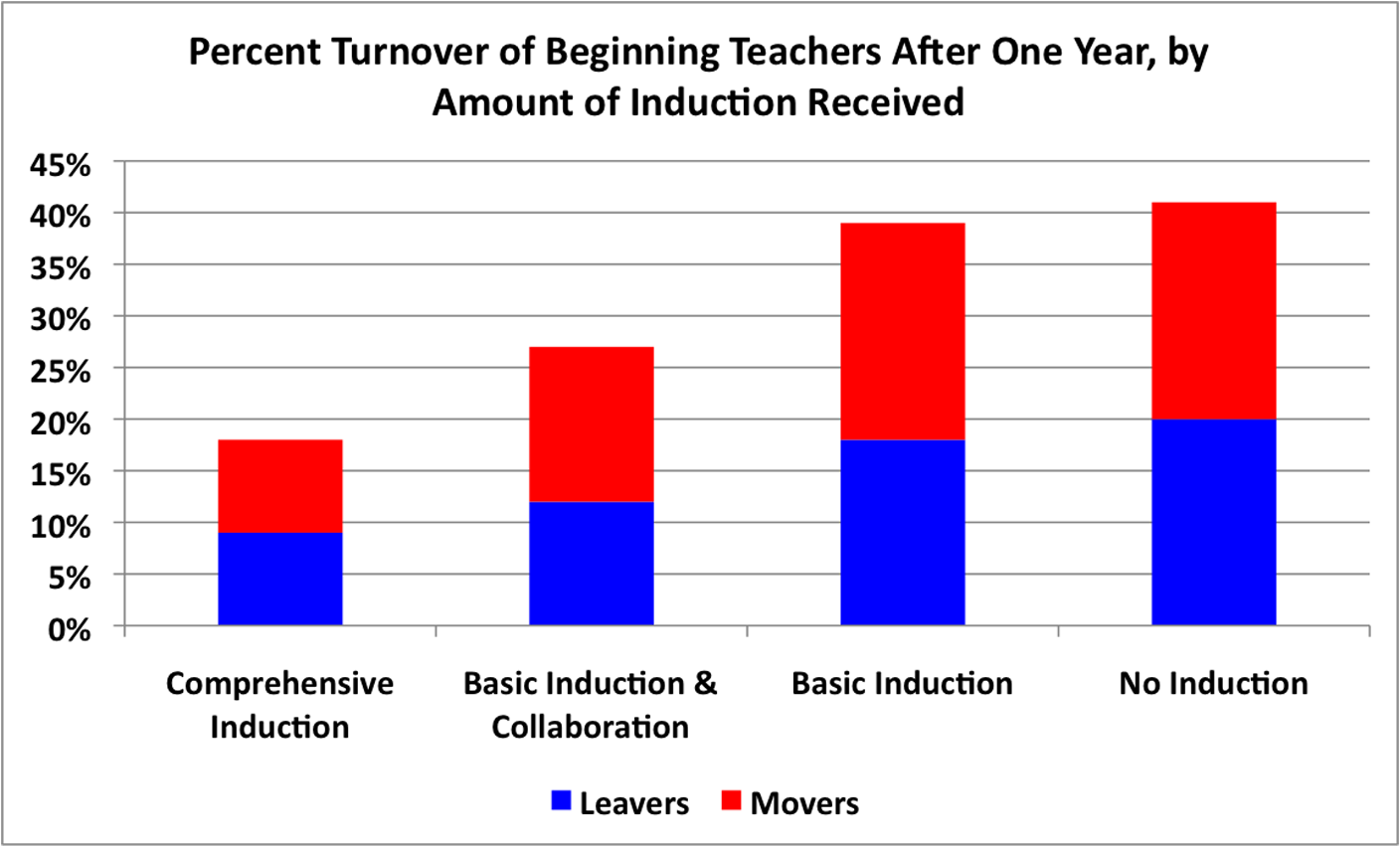Does teacher induction impact teacher turnover for beginning teachers?
Why is this question important? Teacher turnover is an enormous cost for education systems, both in terms of student performance and dollars. High turnover results in increased numbers of inexperienced teachers, a loss of trained teachers, and a cost in dollars for recruitment, hiring, and training new teachers. Induction is one strategy that is being implemented to address retention issues. As induction is a costly strategy and a critical issue, it is important to understand its effectiveness.
See further discussion below.

Source: What Are the Effects of Induction and Mentoring on Beginning Teacher Turnover?
Results: The data suggests that there is a relationship between the level of induction services (duration and intensity) and new teacher turnover. The more comprehensive the induction services, the fewer teachers leave the profession (leavers) and change schools (movers).
Implications: This study suggests an overall relationship between induction and retention. However, many questions remain unanswered, including the relative effectiveness of various induction components, optimum duration and intensity of induction, mentor training and support, etc.
Authors: Thomas Smith, Vanderbilt University, and Richard Ingersoll, University of Pennsylvania
Publisher: American Education Research Journal, Fall 2004, Vol. 41, No.3, pp. 681–714
Study Description: Smith and Ingersoll completed the analysis using data from the National Center for Education Statistics (NCES) surveys concerning schools and school personnel (Schools and Staffing Survey—SASS; Teacher Follow-up Survey—TFS). The U.S. Census Bureau collects the data from a random sample of schools, stratified by state, public/private, and school level. Each cycle of SASS included separate but linked questionnaires for administrators and for a random sample of teachers in each school. After 12 months, the same schools were again contacted, and all those in the original teaching sample who had left their teaching jobs were asked to complete a second questionnaire designed to obtain information on their departure. The first part of the study was to generate descriptive data on induction, mentoring, and turnover. In the second stage the researchers used a multinomial logistic regression analysis to look at the impact that various levels of induction had on teacher retention. The survey data can be found at: http://nces.ed.gov/Surveys/SASS/index.asp
Definitions:
- No induction: No formal support.
- Basic induction: Two support components of induction package (mentoring and supportive communication from school administration).
- Basic induction and collaboration: Four support components (mentoring, supportive communication from school administration, collaboration with other teachers, and a seminar for beginning teachers).
- Comprehensive induction: Four components from above and extra resources (increased time out of class, extra classroom resources, etc.).
Related Research:
Citation: http://www.gse.upenn.edu/pdf/rmi/Effects-of-Induction-and-Mentoring-RMI-Fall-2004.pdf
